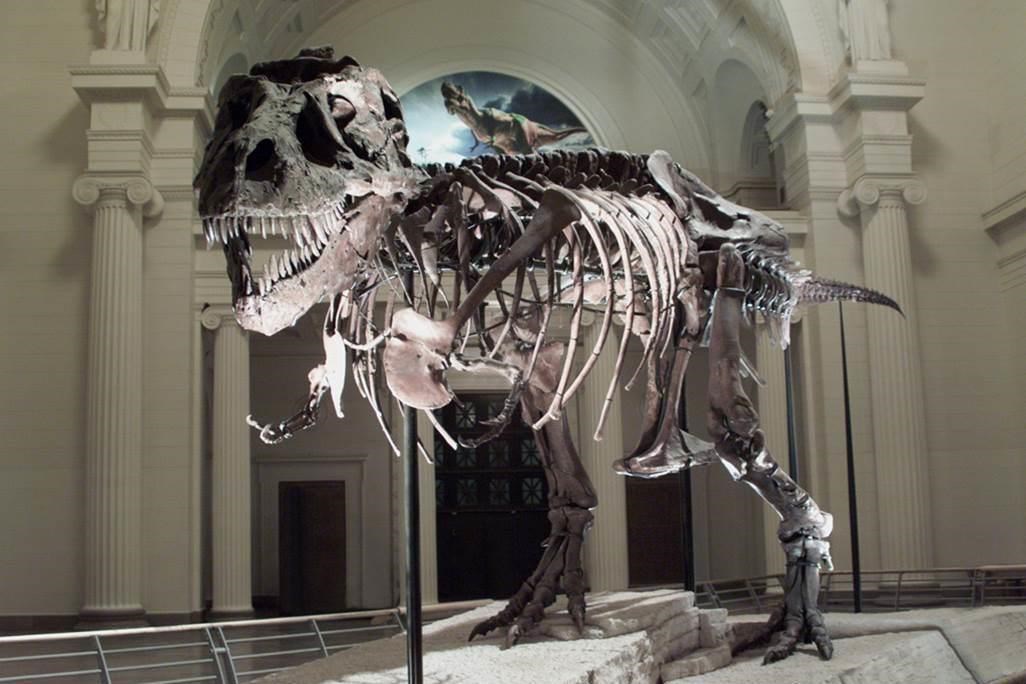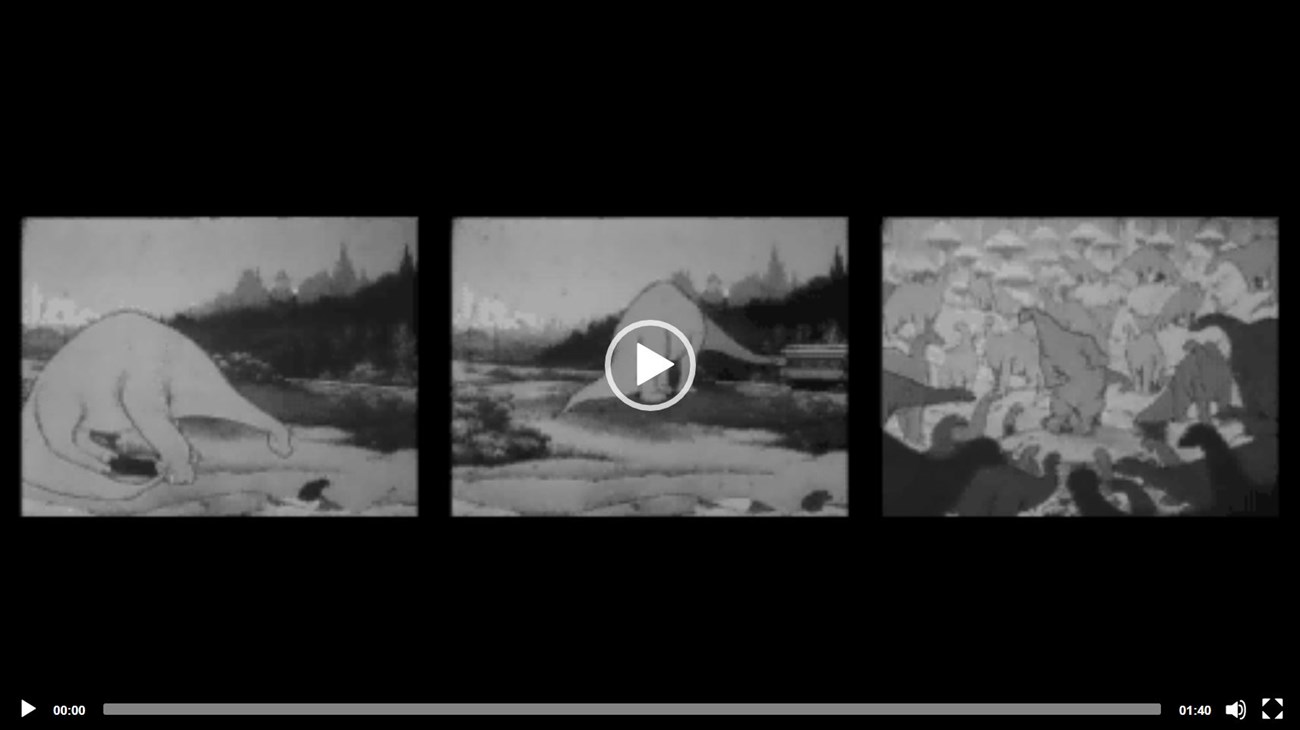
Introduction
Dinosaurs may have come into public view a little later than many other prehistoric animals, but they’ve certainly made up for the late start! If you were to ask people about their favorite prehistoric animals, you’d come up with a list dominated by dinosaurs. Tyrannosaurus, Triceratops, Brontosaurus, Stegosaurus, Velociraptor, Spinosaurus…if you’re reading this page, you probably know about all of them, and many more.
Official State Dinosaurs
Sixteen states and the District of Columbia have either a state dinosaur, or a state fossil that is a dinosaur. A few of them have both. Surprisingly, so far no state has chosen Tyrannosaurus rex as either state fossil or state dinosaur. States have not been consistent about including a species name, such as rex. Some have just used the genus name, although it’s becoming more popular to include the species name as well . The species name isn’t usually critical because most dinosaur genera only have one species. It is important for Missouri because Hypsibema was originally named for a few bones from North Carolina. It is not clear that Hypsibema missouriensis belongs in that genus. There is an old genus name available for the Missouri species, Parrosaurus, so it might be that this state symbol has a name change coming in the future. A 17th state might be joining this group soon: Washington, with the informally named carnivore “Suciasaurus rex”.
-
Arizona: Sonorasaurus (state dinosaur)
-
Arkansas: Arkansaurus fridayi (state dinosaur)
-
California: Augustynolophus morrisi (state dinosaur)
-
Colorado: Stegosaurus (state fossil)
-
Connecticut: Dilophosaurus (state dinosaur)
-
Connecticut: Eubrontes (track) (state fossil)
-
District of Columbia: “Capitalsaurus” (state dinosaur)
-
Maryland: Astrodon johnstoni (state dinosaur)
-
Massachusetts: Podokesaurus holyokensis (state dinosaur)
-
Massachusetts: dinosaur tracks (state fossil)
-
Missouri: Hypsibema missouriensis (state dinosaur)
-
Montana: Maiasaura peeblesorum (state fossil)
-
New Jersey: Hadrosaurus foulkii (state dinosaur)
-
New Mexico: Coelophysis (state fossil)
-
Oklahoma: Acrocanthosaurus atokensis (state dinosaur)
-
Oklahoma: Saurophaganax maximus (state fossil)
-
South Dakota: Triceratops (state fossil)
-
Texas: Paluxysaurus jonesi (state dinosaur)*
-
Utah: Utahraptor (state dinosaur)
-
Utah: Allosaurus (state fossil)
-
Wyoming: Triceratops (state dinosaur)
*This one is complicated: the fossils originally honored were first identified as Pleurocoelus, and that was how the state dinosaur was first declared. Later they were renamed Paluxysaurus, and a bill was passed recognizing this. Even later, paleontologists concluded that Paluxysaurus was young Sauroposeidon, but this change isn’t reflected in the state legislation.
Dinosaur Movie Stars
Dinosaurs and other prehistoric organisms have been the focus of motion pictures, television productions and other entertainment media, see TABLES below. The Jurassic Park series of movies are among some of the highest grossing films in history. Preschoolers are able to enjoy their own age-appropriate dinosaur-themed television show called Dinosaur Train. Both Walt Disney World and Universal Studios theme parks have major dinosaur-focused attractions tied to movies.
Animation
The very first dinosaur to appear on the big screen was in the animation Gertie the Dinosaur, created by Winsor McCay in 1914. Many years later, in 1984, bones of a small early dinosaur were found in Petrified Forest National Park. In honor of the animated sauropod, this dinosaur was nicknamed "Gertie". Today we know this Triassic dinosaur scientifically as Chindesaurus bryansmalli.Dinosaur and Fossil-themed Animation
| RELEASE DATE | ANIMATION FILM TITLE | PRODUCTION COMPANY |
|---|
Dinosaur and Fossil-themed Motion Pictures
| RELEASE DATE | FILM TITLE | PRODUCTION COMPANY |
|---|
Source
Santucci, V.L., Newman, P., and Taff, B.D., 2016. Toward a conceptual framework for assessing the human dimensions of paleontological resources. in Sullivan, R.M. and Lucas, S.G., eds., 2016, Fossil Record 5. New Mexico Museum of Natural History and Science Bulletin 74, p. 239-248. https://irma.nps.gov/DataStore/Reference/Profile/2234900
American Dinosaur Discoveries
In the United States, the scientific study of dinosaur fossils began with a few finds in the first half of the 19th century, although it would take a while for them to be recognized as belonging to dinosaurs. Bird-like tracks found in New England began attracting attention beginning around 1800, and on July 25, 1806, while on his famous expedition, Meriwether Lewis found what was probably a dinosaur rib near Pompey’s Pillar in Montana and attempted to collect it.
The study of American dinosaurs really took off in the 1850s, a time of several milestones:
-
In 1855, blasting at Springfield Armory in Massachusetts (now Springfield Armory National Historic Site) revealed a partial dinosaur skeleton, now known as Anchisaurus.
-
In 1856, Joseph Leidy named the first group of dinosaurs from the Western Hemisphere: Deinodon, Palaeoscincus, Thespesius, Trachodon, and Troödon (now Troodon). They were based on a handful of fossils collected by Ferdinand Vandeveer Hayden from what are now Montana and South Dakota. Although some of these names lasted in use for many decades, only Troodon is still used, and it wasn’t even recognized as a dinosaur until years later (it was named from what were thought to be lizard teeth).
-
In 1858, Leidy described a much more complete specimen from New Jersey as Hadrosaurus, which would give its name to the “duck-billed dinosaurs”. The discovery site is now a National Natural Landmark.
-
Finally, in 1859, during an expedition into Utah on the Old Spanish Trail, John Strong Newberry found and partially excavated the first fossils of a sauropod from North America. Its study was delayed by the Civil War, but it was eventually named Dystrophaeus.
Featured Sites
Morrison Formation
The dinosaur fossils of the Morrison Formation became known to scientists in 1877. Two of them in particular, Edward Drinker Cope and Othniel Charles Marsh, used the fossils as part of their ongoing rivalry, now called the “Bone Wars”. Our picture of dinosaurs owes a lot to the fossils they described from these rocks in the West: Allosaurus, Apatosaurus, Brontosaurus, Camarasaurus, Camptosaurus, Ceratosaurus, Diplodocus, and Stegosaurus are some of the most famous dinosaurs they named over a span of about 20 years.
"Dippy"—Diplodocus carnegii
Two especially famous dinosaur specimens were found in 1899 and 1900. In 1899, a field expedition financed by industrialist Andrew Carnegie uncovered a mostly complete skeleton of Diplodocus in Wyoming. With pieces from other skeletons to fill in the missing bones, this specimen, “Dippy”, was used to make casts that Carnegie sent to a number of other countries for display. “Dippy” became an iconic dinosaur in Europe, the first dinosaur skeleton that many people ever saw exhibited. A year later, Barnum Brown of the American Museum of Natural History discovered the first partial skeleton of what would soon be named Tyrannosaurus rex.
Sternberg “Mummies”
Two of the most unusual dinosaur specimens are a pair of “mummies” found by the Sternberg family in Wyoming. Both of them are specimens of the hadrosaur Edmontosaurus. They are called “mummies” because they include large areas of soft tissue impressions, showing the pattern of scales, large hard beaks made of fingernail-like material, pads on the hands, and other features. One of these skeletons is on display in New York, the other in Germany.
Carnegie Quarry at Dinosaur National Monument
One of the biggest single finds of dinosaur bones in the world was made by Earl Douglass in Utah in 1909. Near Vernal, Utah, he discovered what proved to be a “logjam” of Jurassic dinosaur bones. He worked there for many years for the Carnegie Museum of Natural History excavating many different kinds of dinosaurs and other Jurassic animals. One of the best of these is the nearly complete Apatosaurus on display at the Carnegie Museum. In 1915, the quarry became the centerpiece of new Dinosaur National Monument. The quarry face has been left with many bones still in place and an enclosed exhibit hall has been built around the bone wall.
Cleveland-Lloyd Dinosaur Quarry
The Cleveland-Lloyd Dinosaur Quarry, another rich Jurassic site in Utah, was opened in the 1920s. This site is unusual because almost 70% of the approximately 10,000 dinosaur bones found here belong to the large carnivore Allosaurus fragilis. Bones of at least 46 Allosaurus individuals have been found at this site. It is not known why there should have been so many of this particular kind of dinosaur here. Specimens from this site have been sent to museums around the world. This quarry is now a National Natural Landmark as well as a National Monument under the Bureau of Land Management (Jurassic National Monument).
Dinosaur Valley State Park
One of the most famous dinosaur track sites is preserved in Dinosaur Valley State Park (also a National Natural Landmark) in Texas. In 1938, Roland T. Bird and Barnum Brown investigated and collected tracks from this site that showed Early Cretaceous sauropod and theropod dinosaurs going in the same approximate direction. The sauropod tracks were the first sauropod tracks to be described.
Ghost Ranch
Another place with an unusual concentration of predator remains is Ghost Ranch in New Mexico. At least a thousand skeletons of Coelophysis have been found here, beginning in 1947. Ghost Ranch is now a National Natural Landmark.
Egg Mountain
The “good mother lizard” Maiasaura, known for its nests and eggs, was first found at a site now called Egg Mountain in Montana, discovered in 1977. Maiasaura was not the only dinosaur that nested at the place preserved at Egg Mountain; eggs of Troodon or a similar small carnivore have also been found there.
Featured Article
Site Index & Credits
Age of Dinosaurs (2021)
Text by Justin Tweet (AGI). Contributors: Vincent Santucci (GRD), Adam Marsh (PEFO), ReBecca Hunt-Foster (DINO), Don Corrick (BIBE). Project Lead / Web Development, Jim Wood (GRD).
References
-
Tweet, J.S. and V.L. Santucci. 2018. An Inventory of Non-Avian Dinosaurs from National Park Service Areas. in Lucas, S.G. and Sullivan, R.M., (eds.), Fossil Record 6. New Mexico Museum of Natural History and Science Bulletin 79: 703-730. https://irma.nps.gov/DataStore/Reference/Profile/2257153
-
Santucci, V.L., A. Marsh, W. Parker, D. Chure, and D. Corrick, 2018. “Age of Reptiles”: Uncovering the Mesozoic Fossil Record in three Intermountain national parks. IMR Crossroads. Spring 2018, p. 4-11. https://irma.nps.gov/DataStore/Reference/Profile/2253529
Last updated: August 8, 2023

